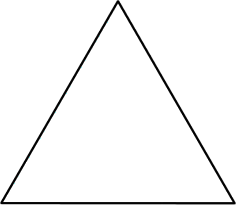11 JUN 2012 by ideonexus
 Language is Alive
Language is Alive
Language is simply alive, like an organism. We all tell each other this, in fact, when we speak of living languages, and I think we mean something more than an abstract metaphor. We mean alive. Words are the cells of language, moving the great body, on legs. Language grows and evolves, leaving fossils behind. The individual words are like different species of animals. Mutations occur. Words fuse, and then mate. Hybrid words and wild varieties or compound words are the progeny. Some mixed word...It evolves, leaves fossils, speciates, etc.
11 JUN 2012 by ideonexus
 The Archeologist's Search Image
The Archeologist's Search Image
A fossil hunter needs sharp eyes and a keen search image, a mental template that subconsciously evaluates everything he sees in his search for telltale clues. A kind of mental radar works even if he isn't concentrating hard. A fossil mollusk expert has a mollusk search image. A fossil antelope expert has an antelope search image. ... Yet even when one has a good internal radar, the search is incredibly more difficult than it sounds. Not only are fossils often the same color as the rocks among...Folksonomies: fossils archeology
Folksonomies: fossils archeology
Varies from hunter to hunter, but must be able to find camouflaged bones that might be fragmented into many pieces.
13 JAN 2012 by ideonexus
 Hypothesis is a Tool for Finding New Facts
Hypothesis is a Tool for Finding New Facts
Hypothesis is the most important mental technique of the investigator, and its main function is to suggest new experiments or new observations. Indeed, most experiments and many observations are carried out with the deliberate object of testing an hypothesis. Another function is to help one see the significance of an object or event that otherwise would mean nothing. For instance, a mind prepared by the hypothesis of evolution would make many more significant observations on a field excursion...It is used to think up new experiments, things to try. Armed with the hypothesis of Evolution, the naturalist has insights into what to look for in fossils and nature.
01 JAN 2012 by ideonexus
 Explanation of Isotopes
Explanation of Isotopes
The number of neutrons in an atom's nucleus is less fixed than the number of protons: many elements have different versions, called isotopes, with different numbers of neutrons. For example, there are three isotopes of carbon, called Carbon-12, Carbon-13 and Carbon-14. The numbers refer to the mass of the atom, which is the sum of the protons and neutrons. Each of the three has six protons. Carbon-12 has six neutrons. Carbon-13 has seven neutrons and Carbon-14 has eight neutrons. Some isotope...The different types of carbon have different numbers of neutrons and therefore different masses.
20 SEP 2011 by ideonexus
 Evolution in the Laboratory Occurs Very Quickly
Evolution in the Laboratory Occurs Very Quickly
One approach is to compare the rates of evolution in the fossil record
with those seen in laboratory experiments that used artificial selection, or
with historical data on evolutionary change that occurred when species
colonized new habitats in historical times. If evolution in the fossil
record were much faster than in laboratory experiments or colonization
events—both of which involve very strong selection—we might need to
rethink whether selection could explain changes in fossils. But ...Folksonomies: evolution experimentation
Folksonomies: evolution experimentation
So quickly in fact that scientists could turn an elephant into a mouse in just 10,000 years.
18 MAY 2011 by ideonexus
 Thomas Jefferson was a Scientist
Thomas Jefferson was a Scientist
Thomas Jefferson was a scientist. That's how he described himself.
When you visit his home at Monticello, Virginia, the moment you enter its portals you find ample evidence of his scientific
interests - not just in his immense and varied library, but in
copying machines, automatic doors, telescopes and other instruments,
some at the cutting edge of early nineteenth-century technology.
Some he invented, some he copied, some he purchased. He
compared the plants and animals in America with Euro...He called himself such and took delight in technology.




